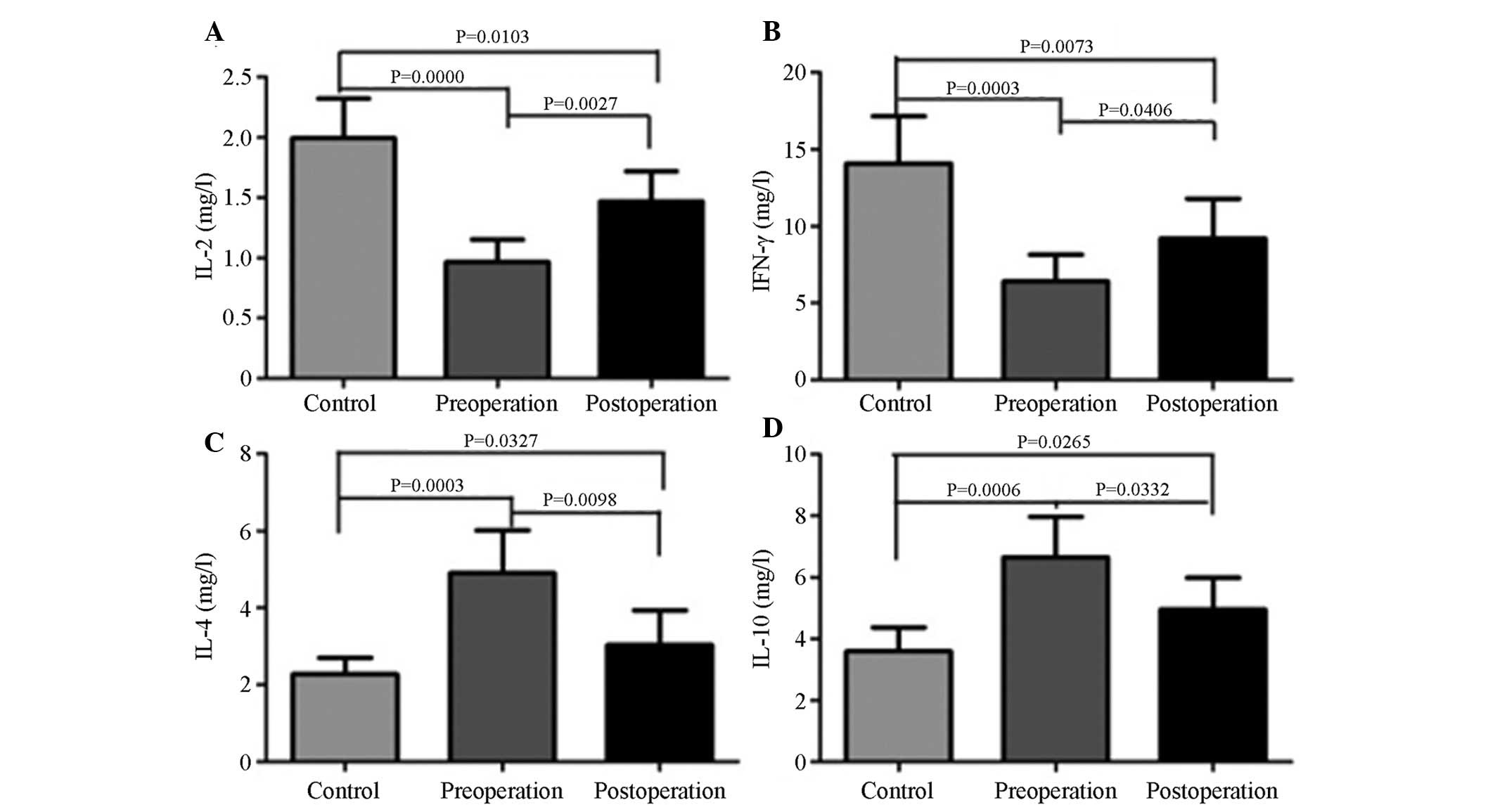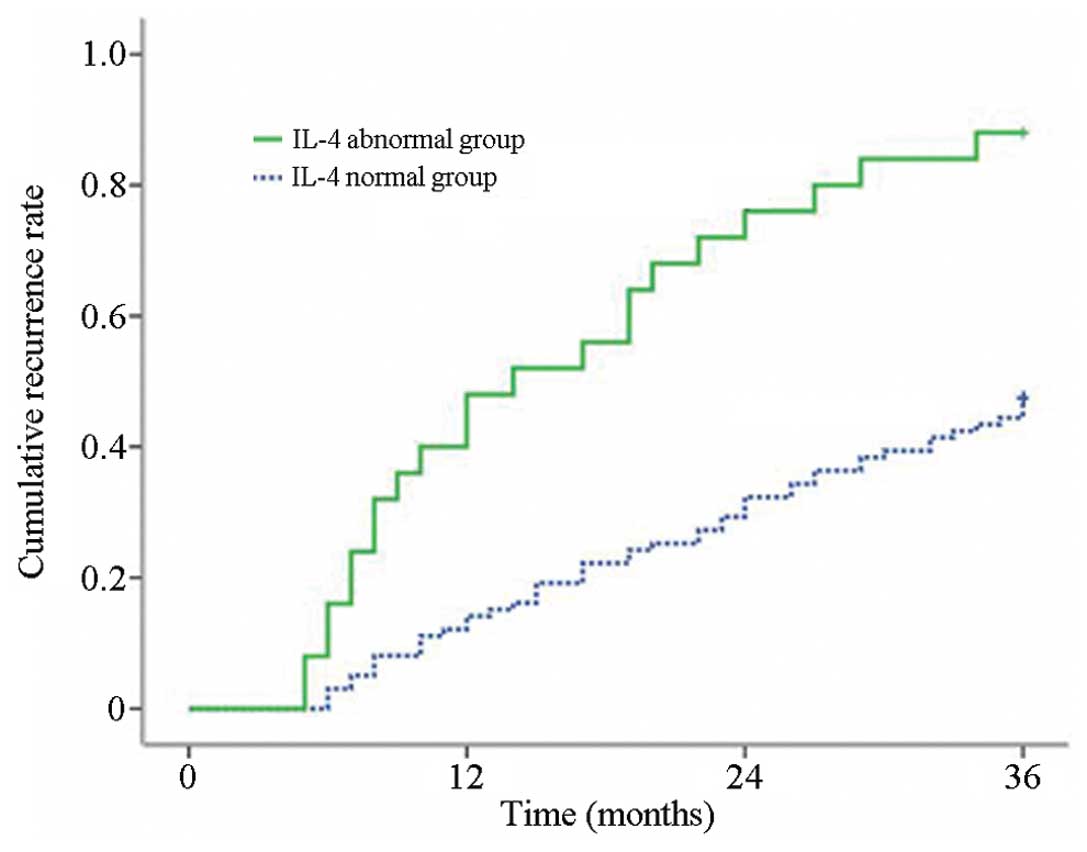|
1
|
Boukovinas I, Tsakiridis K, Zarogoulidis
P, Machairiotis N, Katsikogiannis N, Kougioumtzi I and Zarogoulidis
K: Neo-adjuvant chemotherapy in early stage non-small cell lung
cancer. J Thorac Dis. 5(Suppl 4): S446–S448. 2013.
|
|
2
|
Zarogoulidis K, Zarogoulidis P, Darwiche
K, et al: Treatment of non-small cell lung cancer (NSCLC). J Thorac
Dis. 5(Suppl 4): S389–S396. 2013.
|
|
3
|
Baltayiannis N, Chandrinos M,
Anagnostopoulos D, et al: Lung cancer surgery: an up to date. J
Thorac Dis. 5(Suppl 4): S425–S439. 2013.
|
|
4
|
Yuanying Y, Lizhi N, Feng M, et al:
Therapeutic outcomes of combining cryotherapy, chemotherapy and
DC-CIK immunotherapy in the treatment of metastatic non-small cell
lung cancer. Cryobiology. 67:235–240. 2013.
|
|
5
|
Becker Y: Respiratory syncytial virus
(RSV) evades the human adaptive immune system by skewing the
Th1/Th2 cytokine balance toward increased levels of Th2 cytokines
and IgE, markers of allergy - a review. Virus Genes. 33:235–252.
2006.
|
|
6
|
Pinto RA, Arredondo SM, Bono MR, Gaggero
AA and Díaz PV: T helper 1/T helper 2 cytokine imbalance in
respiratory syncytial virus infection is associated with increased
endogenous plasma cortisol. Pediatrics. 117:e878–e886. 2006.
|
|
7
|
Krohn M, Listing M, Tjahjono G, Reisshauer
A, Peters E, Klapp BF and Rauchfuss M: Depression, mood, stress,
and Th1/Th2 immune balance in primary breast cancer patients
undergoing classical massage therapy. Support Care Cancer.
19:1303–1311. 2011.
|
|
8
|
Green VL, Alexandropoulou A, Walker MB,
Walker AA, Sharp DM, Walker LG and Greenman J: Alterations in the
Th1/Th2 balance in breast cancer patients using reflexology and
scalp massage. Exp Ther Med. 1:97–108. 2010.
|
|
9
|
Hong CC, Yao S, McCann SE, et al:
Pretreatment levels of circulating Th1 and Th2 cytokines, and their
ratios, are associated with ER-negative and triple negative breast
cancers. Breast Cancer Res Treat. 139:477–488. 2013.
|
|
10
|
Wei H, Sun R, Xiao W, Feng J, Zhen C, Xu X
and Tian Z: Traditional Chinese medicine Astragalus reverses
predominance of Th2 cytokines and their up-stream transcript
factors in lung cancer patients. Oncol Rep. 10:1507–1512. 2003.
|
|
11
|
Liang J, Li Y, Liu X, Xu X and Zhao Y:
Relationship between cytokine levels and clinical classification of
gastric cancer. Asian Pac J Cancer Prev. 12:1803–1806. 2011.
|
|
12
|
Chen G, Wang QR and Hu SM: Relationship
between Th1/Th2 drift and T-bet/GATA3 gene expression in elderly
patients with non-small cell lung cancer. Hua Zhong Ke Ji Da Xue
Xue Bao. 5:509–512. 2011.(In Chinese).
|
|
13
|
Ito N, Suzuki Y, Taniguchi Y, Ishiguro K,
Nakamura H and Ohgi S: Prognostic significance of T helper 1 and 2
and T cytotoxic 1 and 2 cells in patients with non-small cell lung
cancer. Anticancer Res. 25:2027–2031. 2005.
|
|
14
|
Sculier JP: Non small cell lung cancer.
Eur Respir Rev. 22:33–36. 2013.
|
|
15
|
Zheng YW, Li RM, Zhang XW and Ren XB:
Current adoptive immunotherapy in non-small cell lung cancer and
potential influence of therapy outcome. Cancer Invest. 31:197–205.
2013.
|
|
16
|
Ito N, Nakamura H, Metsugi H and Ohgi S:
Dissociation between T helper type 1 and type 2 differentiation and
cytokine production in tumor-infiltrating lymphocytes in patients
with lung cancer. Surg Today. 31:390–394. 2001.
|
|
17
|
Filipits M and Pirker R: Predictive
markers in the adjuvant therapy of non-small cell lung cancer. Lung
Cancer. 74:355–363. 2011.
|
|
18
|
Jemal A, Murray T, Ward E, et al: Cancer
statistics, 2005. CA Cancer J Clin. 55:10–30. 2005.
|
|
19
|
Weng Q, Yu LL, Cai YQ and Tang J:
Relationship between peripheral blood cytokine expression and
recurrence in 58 cases with ovarian cancer. Zhong Liu Xue Za Zhi.
11:861–863. 2010.(In Chinese).
|
|
20
|
Francipane MG, Alea MP, Lombardo Y, Todaro
M, Medema JP and Stassi G: Crucial role of interleukin-4 in the
survival of colon cancer stem cells. Cancer Res. 68:4022–4025.
2008.
|
|
21
|
Conticello C, Pedini F, Zeuner A, et al:
IL-4 protects tumor cells from anti-CD95 and chemotherapeutic
agents via up-regulation of antiapoptotic proteins. J Immunol.
172:5467–5477. 2004.
|
|
22
|
Cui X, Yang SC, Sharma S, Heuze-Vourc’h N
and Dubinett SM: IL-4 regulates COX-2 and PGE2 production in human
non-small cell lung cancer. Biochem Biophys Res Commun.
343:995–1001. 2006.
|
















